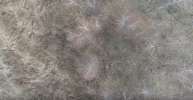- Joined
- Mar 4, 2022
- Messages
- 37
- Reaction score
- 19
- Age
- 69
Hey folks, I've been asked to help with a rather grim task: searching for the remains of persons who have been missing for over a year and who are presumed dead. I got involved with a search that was advertised on Facebook, and though my search was unsuccessful, the family appreciated my efforts, and referred me to a couple other families in the area who are searching for the remains of their missing loved ones. I have no formal training in search and rescue, and of course search and recovery has some significant differences to standard SAR, so I thought I'd reach out and see if anyone in the forum had any experiences and/or tips in this area that they'd care to share. The families are suffering, not just from the loss of a loved one and the lack of closure, but also from the legal complications that result from not being able to issue a death certificate, so I'd appreciate any help and advice that folks could share.
Thanks!
Thanks!





